A voice called, and I went. I went, for a voice called.
—Hannah Szenes—
If the ongoing vanishing is a form of death, history is a corpse growing non-stop; all those constrained choices, laughter and sneer, wandering, emotions, silence, and gleams are swept up and vanish into the breathing air, or contract and aggregate on their own will till there is no way back.
What did the Jewish guerrillas feel when they arrived at Naliboki Forest and looked into the sky through the branches in 1941? What roars did the secret Jewish paratroopers hear when they landed slowly from the Yugoslavian sky in 1945? What emotions did the sight of “Arbeit macht frei” (Work will set you free) on the concentration camp gate evoke in Auschwitz folks when they pass it by in the ultimate chaos of 1945? All these trivialities, accumulating behind the back of history, form into the chaotic, empty and inconstant flesh—what is outside the organs of the corpse.
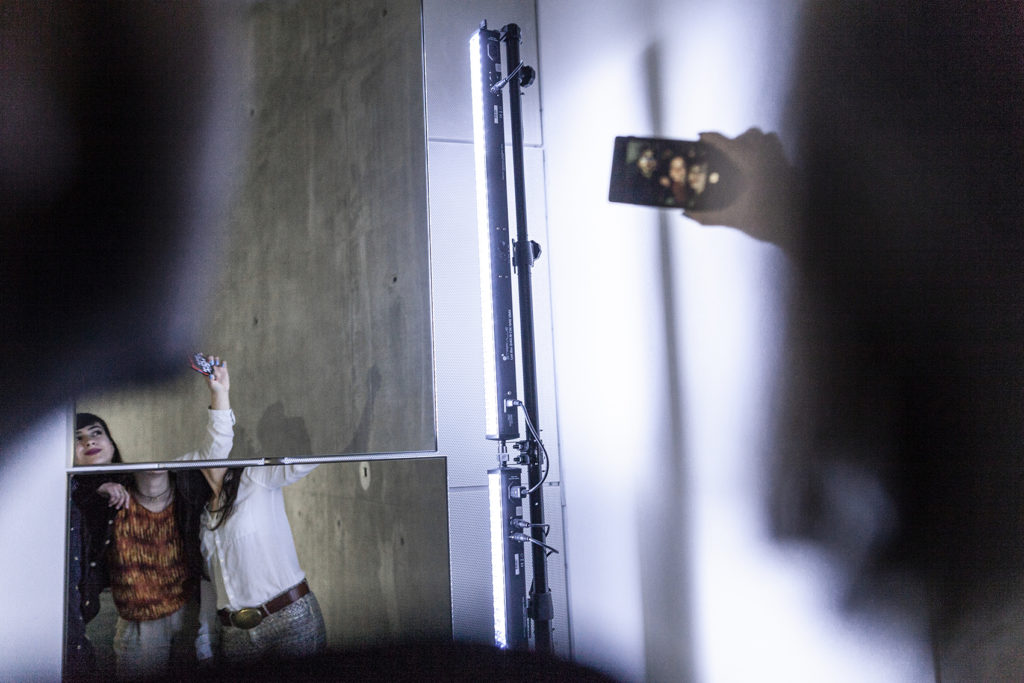
According to Slavoj Zizek, all types of racism are vain efforts to hide anxieties, which can be distilled into a Lacanian question—Che vuoi? (What do you desire?), or “what do you want from me?”. He believes that I and my desire are shaped by others’ desires in me. Jews are suspicious to anti-Semites who never understood what these heretics desired. With an unknown God, their intentions and desires cannot be well defined, we have to fantasize, make up narratives, and fictionalize treacheries to explain their conducts. As a result, the unknowableness of others become stranded, anxieties covered.
And the emptiness of history, like the unknowable God, evokes similar anxieties: how should we determine the roles we play today through the fragmented and disintegrated past? Do we expect the chaotic history to have desire in us all the time? Or, what on earth does the meaningless past want from me?
Hayden White sees the narratives of history as a kind of verbal fiction [1], which compiles history into the big Other during meaning transfer like the fantasies described by Zizek do. Then it lessens the anxieties provoked by uncertainties and shapes our own desires by creating history’s desires in us. Another mysterious narrative lurks while the chaotic nature of history is revealed, which equally fictionalizes the desires that chaos has in us: by no means does the emptiness of history expect nothing from us, it configures our psyches.

It seems that Berlin’s winter exists for Jewish Museum Berlin, the architectural space of which exposes the secretive desires of emptiness to its audiences: to recreate the Jewish history of suffering, architect Daniel Libeskind extruded dozens of deformed spaces named the Voids. Symbolizing the emptiness of space narratives, they not only represent the symbolic meaning of a certain period of history, but also created the fiction above the fictionalization of desire, which has not yet started, amongst the messy flesh outside the well-structured organs. When we are encountered by absolute empty spaces, what shapes us is no more the question of “what does history want from me?”, but an exclamation, “how cruel history is” as well as the statement that follows, “by no means does history care about the meaning of our existence, its sole desire is to expose the vainness of narratives.”
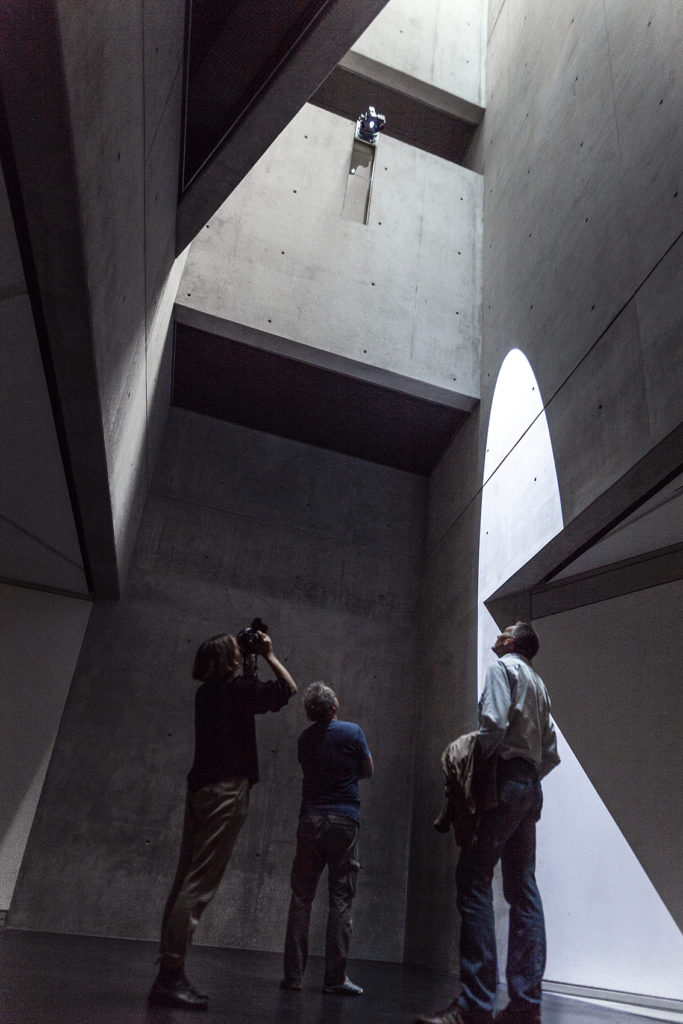
Between the discourses that fill value into life and those that decompose the value of existence, between clear narrative structures and the shocking description of emptiness, is there a middle ground? Mischa Kuball answers this question in theres·o·nant exhibition in the Jewish museum by strengthening and reconstructing the symbolic meaning of the Voids. At the invitation of the museum, Kuball created an installation that allows dialogue between the audience and the architecture: spotlights wandering in the narrow and long space, some hundreds of repeating sound fragments and divided mirror pieces form, among repetitions and reflections, among clear-structured organs and mangled flesh, into an unlikely streak of narrative, that is, Murmur that entails nothing else but syllables.
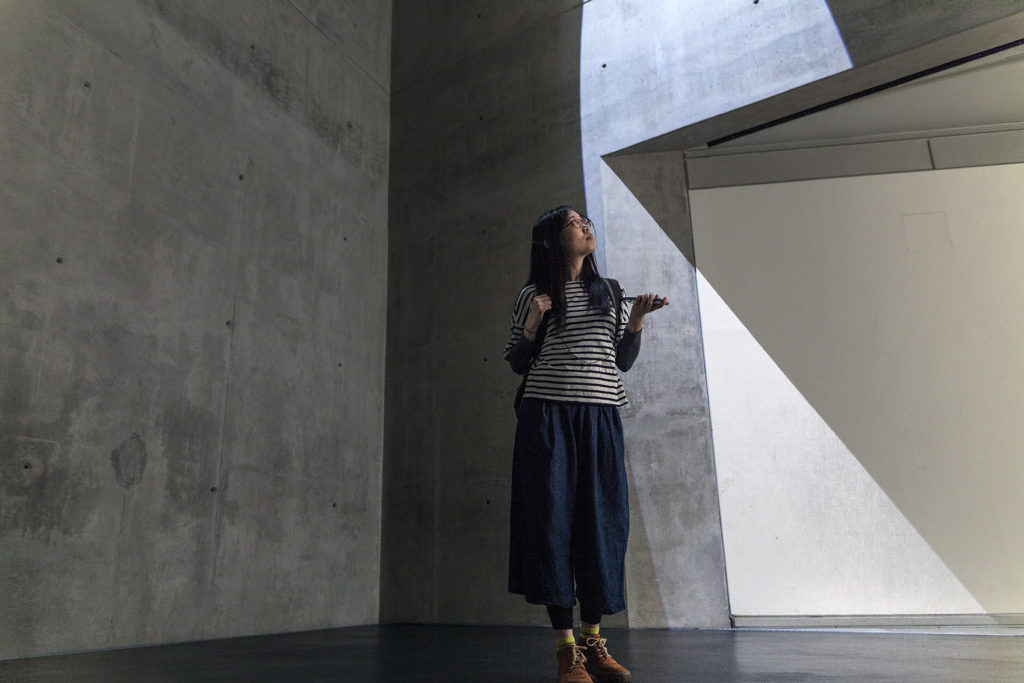
The description of foreign languages in the Book of Isaiah reveals the key qualities of Murmur: although God informs his people that foreign language is “an obscure speech that you cannot comprehend, stammering in a tongue that you cannot understand” (33:19), but it is “with foreign lips and strange tongues God will speak to this people” (28:11). The historical narratives of Murmur and foreign languages share the same contradiction: they are both deprived of semantics and left with tone and rhythms; they are both not understood but matter so much.
The narratives of empty spaces, being screams, silence or jokes, surprise people, so the lingering Murmur has to come from another medium. Bodies in space or the metonymy of bodies are superb carriers for that: mirrors spinning upside-down (bodies in the Holocaust), intermittent flashes, and music fragments that follow the spotlights (bodies’ extension in vision and hearing) altogether form into the narratives of Murmur. While in the metonymy of bodies, as the vehicle, mirrors lose their objects of description during fractures and reflections. Although Murmur still owns some references, the meaning of which has been lost during the différance of symbols.

The repetitive appearances of these objects in space establish Murmur as a language: like the experience with a foreign language, repeated syllables seem to imply the rules of language, pauses seem to decompose the structure of language;
similarly, the recurrences of body as the vehicle in the Voids (recurrences in space: recurring mirrors and spotlights; recurrences in time: intermittent flashes, the cyclic movements of spotlights, and music that changes every 60 seconds) also produce the grammar of Murmur.
Luke Turner depicts Metamodernism as a kind of oscillation as in string theory. To elaborate, instead of clinging to a certain paradigm, metamodernist artists that come after post-modernism oscillate between opposing standpoints. [2] Likewise, the Murmur of historical narratives is not a eclectic pattern of narrative discourses, nor a vehicle of spirituality, nor a container that displays itself only for others’ imagination like a monument, but an intermediate state scattering between order and relativity, incoherent talks that cannot be decoded but never stop.
But when facing narratives in a foreign language, how would we fictionalize their desires in us? While believing that “Heaven and Earth are impartial”, Laozi still fictionalizes the secretive desires of Nature, which invents ethical orders and a hierarchy of lifestyle from the silent and void Tao; in the Theater of Cruelty, Antonin Artaud sees chaos as intensity which itself entails the fictionalization of desires and missions in that chaos will whip the disciplined daily life through cruelty and releases the true meaning of life.
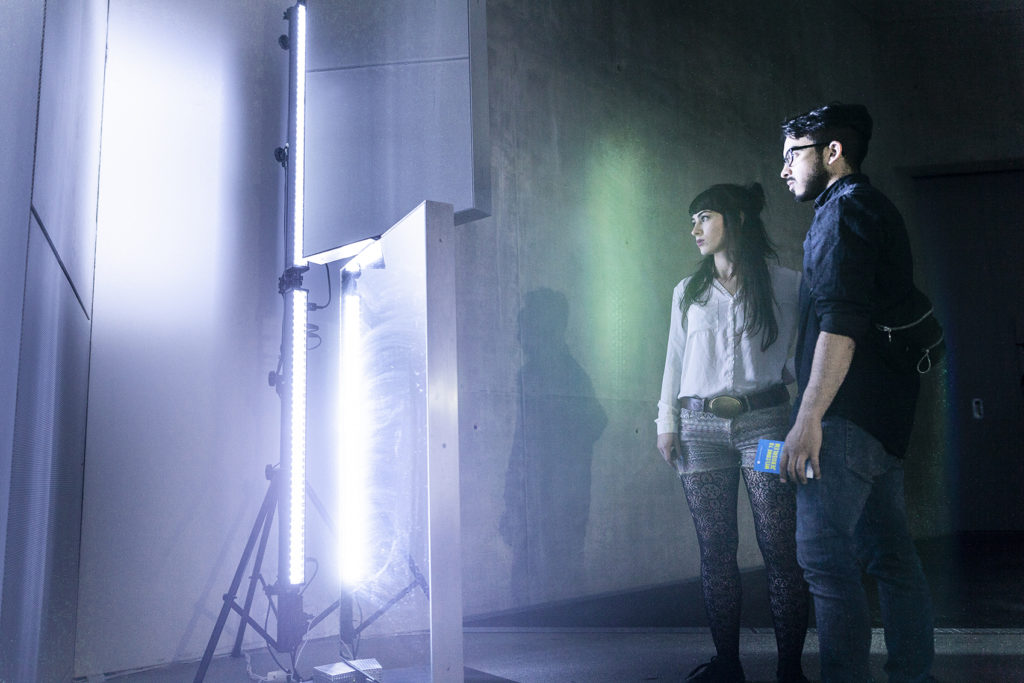
But, when facing Murmur, the fictionalization of desires is always in the suspension. As a result, fantasies are interrupted and their content replaced: the deprivation of semantics drives us toward fictionalizing the desires of incoherent talkers, but the prerequisite of which is spoiled by the coherent soliloquy in Murmur, because this foreign language seems to be talking about something concrete. Hence, the meaningless of history could no more produce any rules of life, which grants us the tunnel that connects us with emptiness—what awaits us at the end of the tunnel is the true nourishment from the Void.
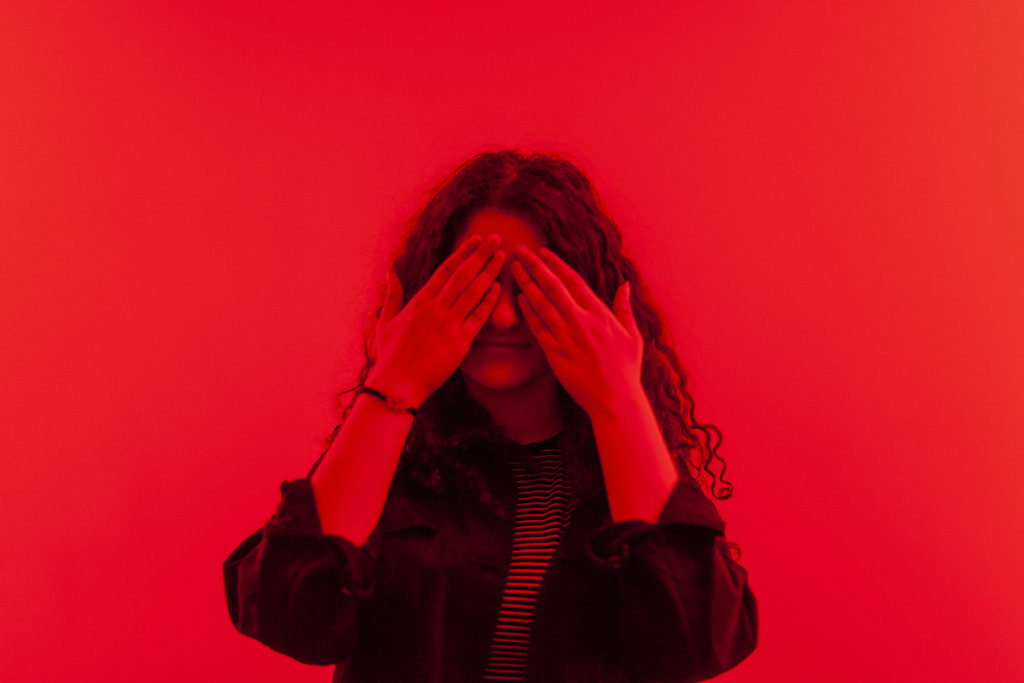
Text: Xi Lei, Beijing/Cologne
Photos: Alexander Basile, Cologne
About the exhibition: With res-o-nant, the Jewish Museum Berlin presents a walk-in light and sound installation by Düsseldorf-based conceptual artist Mischa Kuball. The installation was created especially for the new exhibition space in the basement of the Libeskind Building and can be seen until 1 September 2019.
WHERE. Libeskind-Bau UG, Rafael Roth Galerie, Lindenstraße 9-14, 10969 Berlin-Kreuzberg






